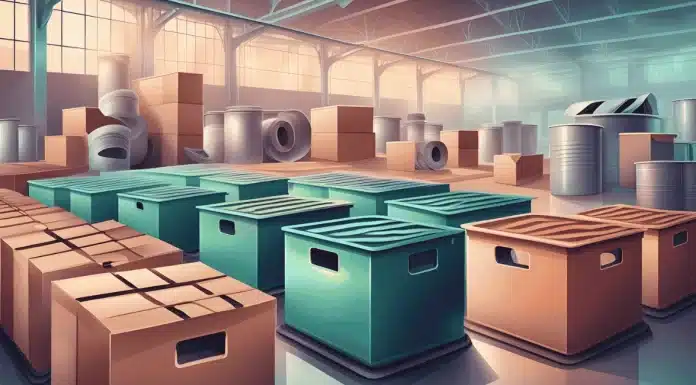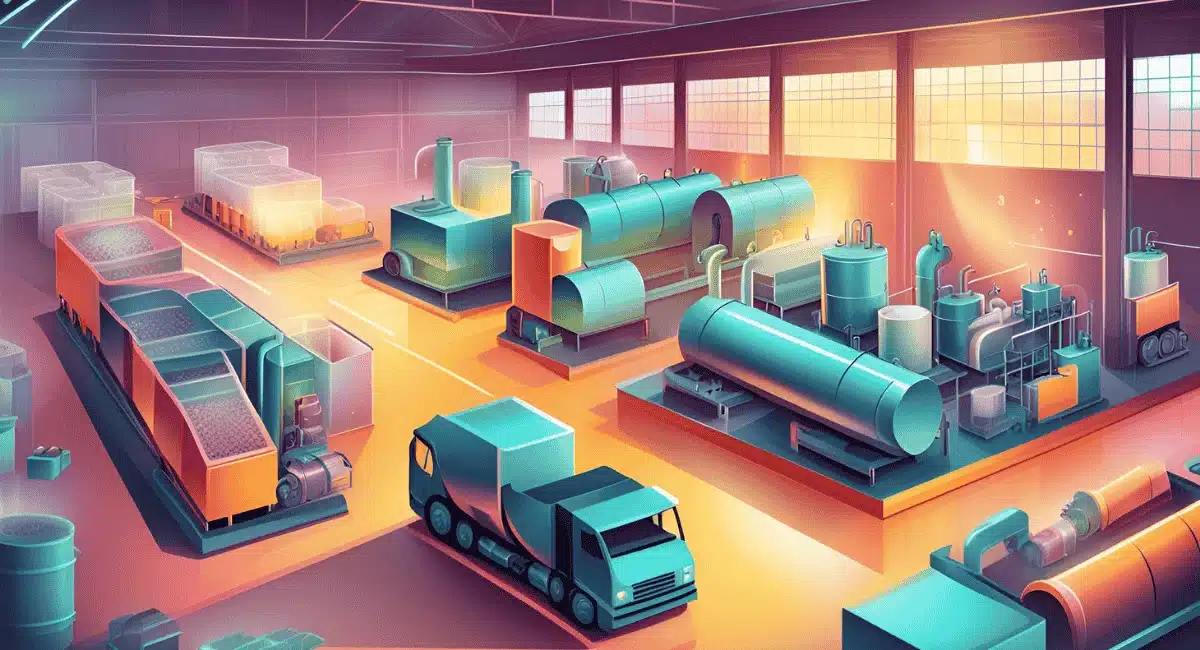Think about this: rising costs, missed deadlines, and wasted resources that add walang halaga sa negosyo mo. Manufacturing waste isn’t just a small issue—it’s eating away at your profits and efficiency. Reducing this waste can completely change the game for your business, helping you cut costs and work smarter.
Lean manufacturing offers powerful tools to find and eliminate waste, but ERP software alone can’t do it all. Take inventory management, for instance. It could cost you more than you think if it’s not optimised. Imagine what you could save by digging deeper and tackling waste where it matters most.
Let’s dive in to discover effective strategies that can transform your manufacturing process and make every resource count.
Key Takeaways
|
Table of Contents
Benefits of Reducing Manufacturing Waste
Before we start on the practical tips for reducing manufacturing waste, we need to know what benefit it will bring. We believe most of you understand how much reducing waste can help your business operation, but knowing more about the benefits won’t hurt.
It is more than just a cost-cutting strategy; it brings several key advantages that can improve overall business performance and sustainability.
These benefits include:
- Cost Savings: Waste reduction leads to significant cost savings, as manufacturers spend less on excess materials, energy, and storage. Lowering waste reduces overhead and increases profit margins.
- Improved Efficiency: By focusing on waste elimination, companies streamline processes, reduce production times, and minimize bottlenecks, leading to faster order fulfilment and increased productivity.
- Enhanced Quality Control: Reducing waste often means refining processes to prevent defects and errors, leading to higher-quality products and fewer customer complaints or returns.
- Environmental Sustainability: Minimizing waste reduces the amount of discarded materials and energy consumption, helping manufacturers lower their environmental footprint and support global sustainability efforts.
- Better Resource Utilization: Efficient use of resources, such as labor and equipment, means that manufacturers can optimize every aspect of production, avoiding unnecessary purchases and maximizing output.
Focusing on waste reduction boosts financial performance and strengthens a manufacturer’s reputation as an environmentally conscious and efficient operation. Now, with all that out of the way, let’s start with 9 tips you could implement to reduce manufacturing waste in your business.
1. Recognize the Major Types of Manufacturing Waste
Manufacturing waste can take various forms, each adding unnecessary costs. Lean manufacturing categorizes these into eight main types: overproduction, waiting, transportation, excess processing, inventory, motion, defects, and unused talent.
Each type affects efficiency—overproduction ties up capital, waiting wastes labour hours, and defects require costly rework. Identifying these specific waste types within your processes is the first step to a leaner operation. By pinpointing these waste areas, you can target solutions to reduce inefficiencies.
2. Optimize Inventory Management
Effective inventory management requires balancing stock to prevent shortages or excess. Begin by forecasting needs using past sales data and current trends to ensure the right materials are available without overstocking.
Best inventory management software help monitor stock levels, automate reordering, and reduce the risk of stock decay or damage. These manufacturing inventory software also provide real-time insights, allowing you to adjust production based on demand and maintain optimal inventory levels, which minimizes waste and improves cash flow.

3. Minimize Packaging Waste
Packaging waste contributes heavily to overall waste in manufacturing, especially with single-use materials. Start by evaluating if your packaging can be redesigned with eco-friendly options like recyclable or compostable materials. This approach reduces waste and appeals to environmentally conscious consumers.
Opting for recyclable or reusable packaging also lessens environmental impact. Consider repurposing leftover packaging into new products, adding sustainability to your process. These steps help reduce waste, lower costs, and promote resource efficiency.
4. Implement Routine Equipment Maintenance
Regular equipment checks are essential to avoid unplanned downtime and costly repairs. Unscheduled maintenance can disrupt production and delay orders, adding to operational expenses. By establishing a preventive maintenance schedule, you can extend the lifespan of your equipment and reduce the risk of unexpected breakdowns.
Using manufacturing software like HashMicro allows you to track equipment status and schedule maintenance. This allows issues to be detected and addressed early, ensuring that machines run efficiently without causing delays or additional costs.
5. Leverage Automation in Manufacturing Waste
Automation may look costly at first, but it saves a lot in the long run. Automated software speeds up work, reduces mistakes, and cuts labor costs, making production smoother.
Cloud-based manufacturing software makes automation affordable for businesses. They don’t need pricey setups, so you can get the benefits of automation without big spending. This helps manufacturers save on waste, improve efficiency, and increase profits.
6. Adopt Lean Manufacturing Principles
Applying 5S principles—Sort, Set in Order, Shine, Standardize, Sustain—reduces waste by organizing tools and materials. This setup saves time, reduces extra movement, and makes the workspace more efficient.
Training employees in 5S regularly helps make these practices a habit. As lean practices become routine, a culture of continuous improvement grows, making daily operations smoother and more productive.
7. Reduce Energy Waste
Energy waste is often overlooked in manufacturing, but it can raise costs and impact the environment. Start with an energy audit to find where you can save energy by switching to efficient lighting, adjusting machine schedules, or upgrading equipment.
By monitoring energy use, you can keep costs down and support sustainability goals. Reducing energy waste benefits your bottom line and enhances your facility’s environmental impact.
8. Standardized Work Processes
Standardizing work processes reduces variation, minimizes errors, and boosts efficiency. Clear procedures help employees perform tasks consistently, reducing rework and improving quality control.
By following best practices, employees can maintain steady output quality. Standardization ensures predictable results, making workflows smoother and more efficient.
9. Encourage Employee Feedback and Involvement
Employees on the manufacturing floor often see waste issues that management might miss. Seeking their feedback and involving them in brainstorming for waste reduction can uncover hidden inefficiencies.
By empowering employees to suggest improvements, you create a culture of teamwork and continuous improvement. This collaborative approach helps minimize waste and engages everyone in making the business better.
Also read: Top Manufacturing Asset Management Software
Conclusion
Cutting down manufacturing waste is an important step to run a smoother, more efficient operation. With HashMicro’s Manufacturing Software, you can lower costs and speed up production by reducing waste in areas like inventory, energy use, and work processes. Lean practices not only save money but also create a more productive workplace.
Using these strategies helps companies build long-term sustainability and improve across all departments. Reducing waste increases efficiency and product quality, giving manufacturers a strong advantage. Want to see these benefits for yourself using manufacturing execution system? Try HashMicro’s free demo today!

FAQ Around Manufacturing Waste
-
What type of waste is generated by manufacturing?
Manufacturing generates waste like excess materials, unused inventory, and energy waste. These wastes increase costs and lower production efficiency.
-
What are the 8 wastes of manufacturing?
The 8 wastes are overproduction, waiting, transportation, excess processing, inventory, motion, defects, and unused talent. Each contributes to lost time and higher costs.
-
What is the biggest waste in manufacturing?
Overproduction is often the biggest waste, leading to unsold inventory and extra storage costs. Reducing it helps cut expenses and improve cash flow.
























